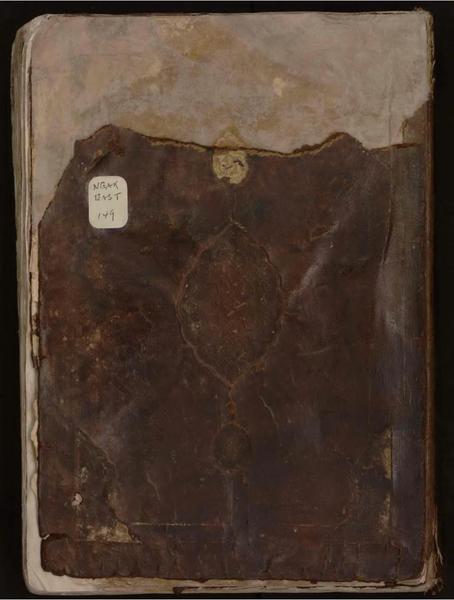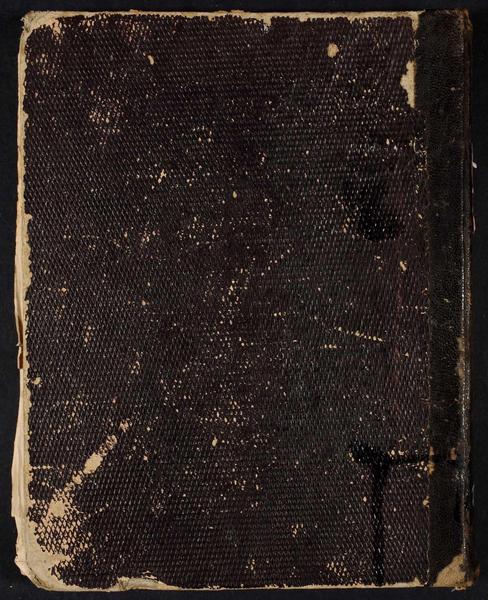 1
1title: Ilyas Basim Khuri Bazzi Rahib The Widow?s Offering - Walters W592196A - Full Page
artist: unknown
date: 1684
medium: technique ink and=pigments on=laid paper
dimensions: size cm height=16 width=11
current location: Acquired by Henry Walters
credit: Walters Art Museum:
 Home page
Home page  Info about artwork
Info about artworklicense:Public domain
 2
2title: Ilyas Basim Khuri Bazzi Rahib Jesus and the Canaanite Woman - Walters W59243A - Full Page
artist: unknown
date: 1684
medium: technique ink and=pigments on=laid paper
dimensions: size cm height=16 width=11
current location: Acquired by Henry Walters
credit: Walters Art Museum:
 Home page
Home page  Info about artwork
Info about artworkdescription: This folio from Walters manuscript W.592 contains an illustration of Jesus and the Canaanite woman.
license:Public domain
 3
3title: Ilyas Basim Khuri Bazzi Rahib Jesus Heals a Demon-possessed Boy - Walters W59248B - Full Page
artist: unknown
date: 1684
medium: technique ink and=pigments on=laid paper
dimensions: size cm height=16 width=11
current location: Acquired by Henry Walters
credit: Walters Art Museum:
 Home page
Home page  Info about artwork
Info about artworklicense:Public domain
 4
4title: Ilyas Basim Khuri Bazzi Rahib Jesus Prays in Gethsemane - Walters W59274A - Full Page
artist: unknown
date: 1684
medium: technique ink and=pigments on=laid paper
dimensions: size cm height=16 width=11
current location: Acquired by Henry Walters
credit: Walters Art Museum:
 Home page
Home page  Info about artwork
Info about artworklicense:Public domain
 5
5title: Ilyas Basim Khuri Bazzi Rahib Portrait of Mark - Walters W59285B - Full Page
artist: unknown
date: 1684
medium: technique ink and=pigments on=laid paper
dimensions: size cm height=16 width=11
current location: Acquired by Henry Walters
credit: Walters Art Museum:
 Home page
Home page  Info about artwork
Info about artworklicense:Public domain
 6
6title: Première page de l'évangile de saint Marc, avec une miniature du baptême du Christ, extraite d'un évangéliaire copte-arabe provenant du Caire
artist:
Anonymousdate: between circa 1249 and circa 1250
medium: technique illumination parchment
dimensions: size cm 24.5 17.5
current location: Bibliothèque de Fels, Institut catholique de Paris
source: [link ipc.fr]
credit: ipc.fr
license:Public domain
 7
7title: John Frederick Lewis Study for 'The Courtyard of the Coptic Patriarch's House in Cairo' - Google Art Project
artist: John Frederick Lewis
date: 1864
credit: jQFZ0qNok-pSIQ at Google Cultural Institute, zoom level maximum
license:Public domain
 8
8title: The Lights of the Stars
artist: al-Rumi, Jamist
date: between 1600 and 1699
medium: ru 1=Рукописи fr 1=Manuscrits en 1=Manuscripts zh 1=手稿 pt 1=Manuscritos ar 1=مخطوطات es 1=Manuscritos
dimensions: en 1=387 leaves (15 lines), bound: paper ; 31 x 22 centimeters
current location: ru|1=Библиотека Конгресса fr|1=Bibliothèque du Congrès en|1=Library of Congress zh|1=国会图书馆 pt|1=Biblioteca do Congresso ar|1=مكتبة الكونغرس es|1=Biblioteca del Congreso
description: The present manuscript is a commentary entitled Anwār al-nujūm (The lights of the stars) by an author who appears to have stated his name as Jamist al-Rumi (Jamist the Byzantinian). The work is based on Al-zīj al-jadīd (The new astronomical tabulations) by Alī ibn Ibrāhīm Ibn al-Shāṭir (died 1375), the most-distinguished Muslim astronomer of the 14th century. Ibn al-Shāṭir was active as muwaqqit (timekeeper) at the Umayyad mosque in Damascus, where he constructed a magnificent sundial to adorn the central minaret; it had special curves to measure the times for the five daily prayers. The extensive treatise on which this commentary is based is called “the new astronomical tabulations” to distinguish it from a previous, and now lost, work also by Ibn al-Shāṭir simply called Zīj (Astronomical tabulations). Ibn al-Shāṭir's research for the first Zīj allowed him to develop revolutionary ideas regarding planetary astronomy. He departed from the traditional Ptolemaic astronomical model for a system that preserved and even enhanced the correspondence between foreshadowed and observed phenomena. He changed Ptolemy’s system whenever it implied non-uniform motions of the planets—uniformity being one of the Aristotelian attributes for the motion of celestial matter. The results of this substitution are of interest for several reasons. While creating a model that was mathematically consistent with the Ptolemaic one, Ibn al-Shāṭir was able to formulate a planetary theory of circular uniform motion, in compliance with Aristotelian ideas on matter. The main text, which extends for almost 300 folios, is surrounded in many places by marginal notes that appear to be in the same hand as the main text. These marginalia not only comment on the text itself, but provide extensive calculations and other information derived from Ibn al-Shāṭir’s treatise. The last 100 folios of the manuscript consist of astronomical tables, including tables for the conversion of different dating systems (coptic, Persian, Byzantine, and Islamic). Jamist al-Rumi also provides times of sunrise and sunset during the year and all the practical information needed to perform timekeeping in Islam. A note on folio 1 recto shows the name of ‘Abdallāh Musā ibn Muḥammad as the former owner of the codex, while a plate on the same folio mentions that that the manuscript later belonged to the East Asia Economic Research Bureau of the South Manchuria Railway Company, a Japanese company whose prominent red stamps can be seen the on first folios (1 recto and 2 recto).
arabic manuscripts; Astronomy -- Tables; Astronomy, Arab; Calendars; Islamic calendar; Time measurements; Timekeepinglicense:Public domain
 9
9title: Sermons
artist: John Chrysostom, Saint, circa 347-407
date: 1871
medium: ru 1=Рукописи fr 1=Manuscrits en 1=Manuscripts zh 1=手稿 pt 1=Manuscritos ar 1=مخطوطات es 1=Manuscritos
dimensions: en 1=158 pages ; 23 x 18 centimeters
current location: ru|1=Ближневосточная школа теологии fr|1=École de théologie du Proche-Orient en|1=Near East School of Theology zh|1=近东神学院 pt|1=Escola Teológica do Oriente Próximo ar|1=مدرسة الشرق الأدنى لللاهوت es|1=Colegio de Teología del Cercano Oriente
description: This manuscript, dated 1871, contains a selection of 87 homilies of John Chrysostom (circa 347–407), a church father and archbishop of Constantinople. Chrysostom originally wrote in Greek, but he was commonly read in arabic translations, especially by coptic and Melkite readers. This particular collection of 87 sermons remains extant in several manuscripts. This copy, however, lacks sermon 15, although the copyist indicates its subject: the casting out of Satan from the man dwelling among the tombs (see Mark 5:1-20). The Orthodox and Eastern Catholic churches honor John Chrysostom as a saint. He was known as a great preacher, and his sermons are his most enduring legacy.
Homiliaries; Sermonslicense:Public domain

title: Liturgical Texts (Kacmarcik Codex)
artist: unknown
date: between 1344 and 1345
medium: ru 1=Рукописи fr 1=Manuscrits en 1=Manuscripts zh 1=手稿 pt 1=Manuscritos ar 1=مخطوطات es 1=Manuscritos
dimensions: en 1=149 leaves ; 16.8 x 14 centimeters
current location: ru|1=Музей и библиотека рукописей имени Хилла fr|1=Musée et Bibliothèque de Manuscripts Hill en|1=Hill Museum & Manuscript Library zh|1=希尔博物馆与手稿图书馆 pt|1=Museu e Biblioteca de Manuscritos Hill ar|1=مكتبة متحف ومخطوطات هِل es|1=Museo y Biblioteca de Manuscritos Hill
description: This 14th-century manuscript was written in the Monastery of Saint Antony near the Red Sea in Egypt. It contains a unique set of prayers for the Eucharistic liturgy, displayed in parallel texts in both Greek and arabic. These are the Order of the Liturgy, with the Anaphoras of Saint Basil, Saint Gregory the Theologian, and Saint Mark, along with prayers for the sick, the dead, and other needs. The Anaphora is part of the Divine Liturgy or mass, in which the bread and wine are consecrated as the body and blood of Christ. The Greek is written in coptic-style letters and has several misspellings, which are explicable by the coptic milieu. Although Greek had not been commonly used in Christian worship in Egypt for some centuries, these precious texts were thought worthy of preservation and of translation into the now-dominant language of the region, arabic. The date in the manuscript is given as the year “1061 of the Martyrs” (1344–45). This reflects the fact that the coptic Church begins its calendar from 284 AD, the year that Diocletian became emperor of Rome. Determined to crush Christianity, Diocletian unleashed waves of persecution throughout the empire. The persecutions were especially severe in Egypt.
Codex; Liturgies; Missals; Prayerslicense:Public domain





